︎Active Infinitive︎Dana Karwas in conversation with Keller Easterling︎Active Infinitive︎Dana Karwas in conversation with Keller Easterling
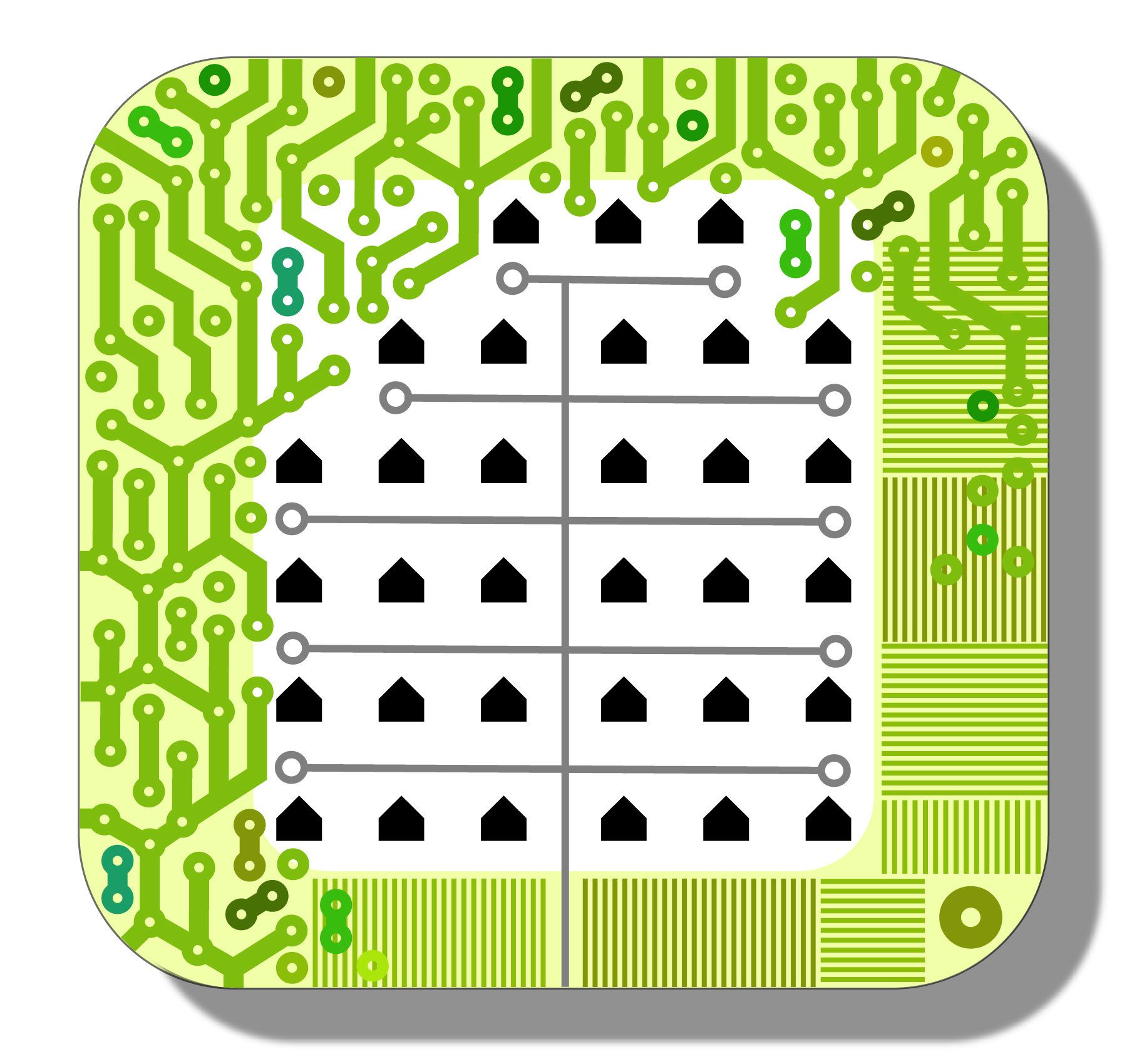
Subtraction Forest/Jungle, Keller Easterling, 2014. Sequence 1 of 8.
New broadband capacities from fiber optic cable in populous countries like Kenya serve a skyrocketing number of cell phones making digital telecommunications more robust. But spatial information systems are more robust when people access each other and multiply their exchanges. In Kenya the urban vessels that accompany digital technologies are often large highways or zone enclaves that decrease exchanges, inflate the distances between people or make cities with the topology of a closed loop. While roads are typically regarded as conduits of
progress and opportunity, in rural or wilderness areas, it might be more productive to dial down roads when dialing up broadband. Shrinking roads means preserving farm and wilderness while attracting the global networks of tourism
and university research. One can then hack a telecommunications network by changing a road as well as changing a bit of code.
Active Infinitive
Dana Karwas in conversation with Keller Easterling
I love orchestrating surprises. It’s a form of time travel: I’m creating a piece of the future that I’m a part of, but which is unleashed and accessed by others.
Many years ago, I briefly worked as a temp doing architectural drafting in New York City. I was given the task of updating redlines for a Las Vegas casino project. I confidently pretended to understand the firm's specific line-weight file, while slowly coming to the realization that I was a fully-fledged CAD specialist—pushing lines with a mouse, cutting them, splicing, adding weights, notating, repeat. It was a vacuum of creativity, especially for the under-skilled and pretentious architecture grad I was at the time.
A few days into this project, I moved onto the private gambling room, which was located above the larger, maze-like public slots area. This was meant for the high rollers and whales. It had a bar, varying levels, wood paneling, and an enormous gambling table at the center.
After weeks of staring at the representation of this room as a series of lines and perspectives, the absurd theatricality of it possessed me. I saw an architectural potential in the drawings. What if a person suddenly found the need to escape a bad situation? Perhaps they had made a series of Very Bad Decisions, or found themselves in a Dead-End Job. Using perfect line-weights, I made a notation for a trapdoor into the space under the table. I then went into the reflected ceiling plan of the floor below in a different drawing, and similarly notated it there, called it out, and gave it dimensions to fit an adult human. It was perfectly spec-ed onto the drawing. The sense of control this gave me—of future opportunity and chaos—was thrilling.
The next day, I made my own exit from the firm.
I’ve never visited the casino, but I sometimes wonder if the trapdoor made it into the final blueprints—inadvertently slipping through the final engineering review by people not thinking to notice such a thing might be there, or maybe consciously included by a designer, delighted to find such a surprise.
Throughout my studies and in developing my arts practice, Keller Easterling has been a constant reference and great source of inspiration. She has a specific way of bringing architecture into visibility from various fields of information, and implants spatial form/s into the imagination through her writing. Her work has entered the mainstream through a range of disciplines; from performance, or a set of instructions, even a laser disk!
Many know her as an architect, writer, and as the Enid Dwyer Professor and Director of the Master of Environmental Design (MED) Program at the Yale School of Architecture. However, it should also be known that she possesses the profound gift of idea generation for anyone who encounters her work. Her important and critical voice in the field allows us to see something recognizable as architecture that might otherwise go unnoticed.
Expecting nothing, I asked her to participate in this issue. When she said yes, I toted around her books (Medium Design: Knowing how to work on the world and Extrastatecraft: The Power of Infrastructure Space), sputtering her quotes to my students like a broken robot—
On latent space in design: How
do you represent an instruction that will play out in time?
On new technologies replacing the
old: It is a closed loop establishing a new smart that, by definition, recreates the old dumb.
After finishing my reread of Medium Design, I was overwhelmed with ideas. Hundreds of trapdoors were waiting to open! I had long forgotten about my casino trapdoor. Easterling’s writing released the memory, opening the latent space of the act. She also showed me how to describe the act of designing something for a body to move through in the future.
For our dialogue, I immediately turned to cinema. I realized that we shared a sentiment for an architecture that is driven by human scenarios; and also, a shared suspicion for the complacency of (monolithic) forms driving architectural discipline. Thinking on this issue’s theme, I became obsessed with a small moment from Jacques Tati’s 1967 film Playtime, in which architecture informs the action of the scene: A group of tourists sit on a bus. Adjacent to it is a modern office building. A window-washer is cleaning a large window, onto which the tourists and their bus is reflected. Suddenly, he rotates the window to open it, and the reflection of the bus tilts; the tourists scream in delight, as though in their reality, their bus had tilted along with the window.
This intersection of movement and a window reflection driving a narrative fascinated me, so I asked Easterling to watch the film again before we spoke. Our discussion exceeded all my hopes—not only does our style of thinking overlap (notably, a shared critique of the suburbs!), but her approach to activating forms reminded me of all the inherent possibilities of architecture also as art; how film can show different spaces; and architecture as an interdisciplinary practice, a community, a tool for emotion, and connection.
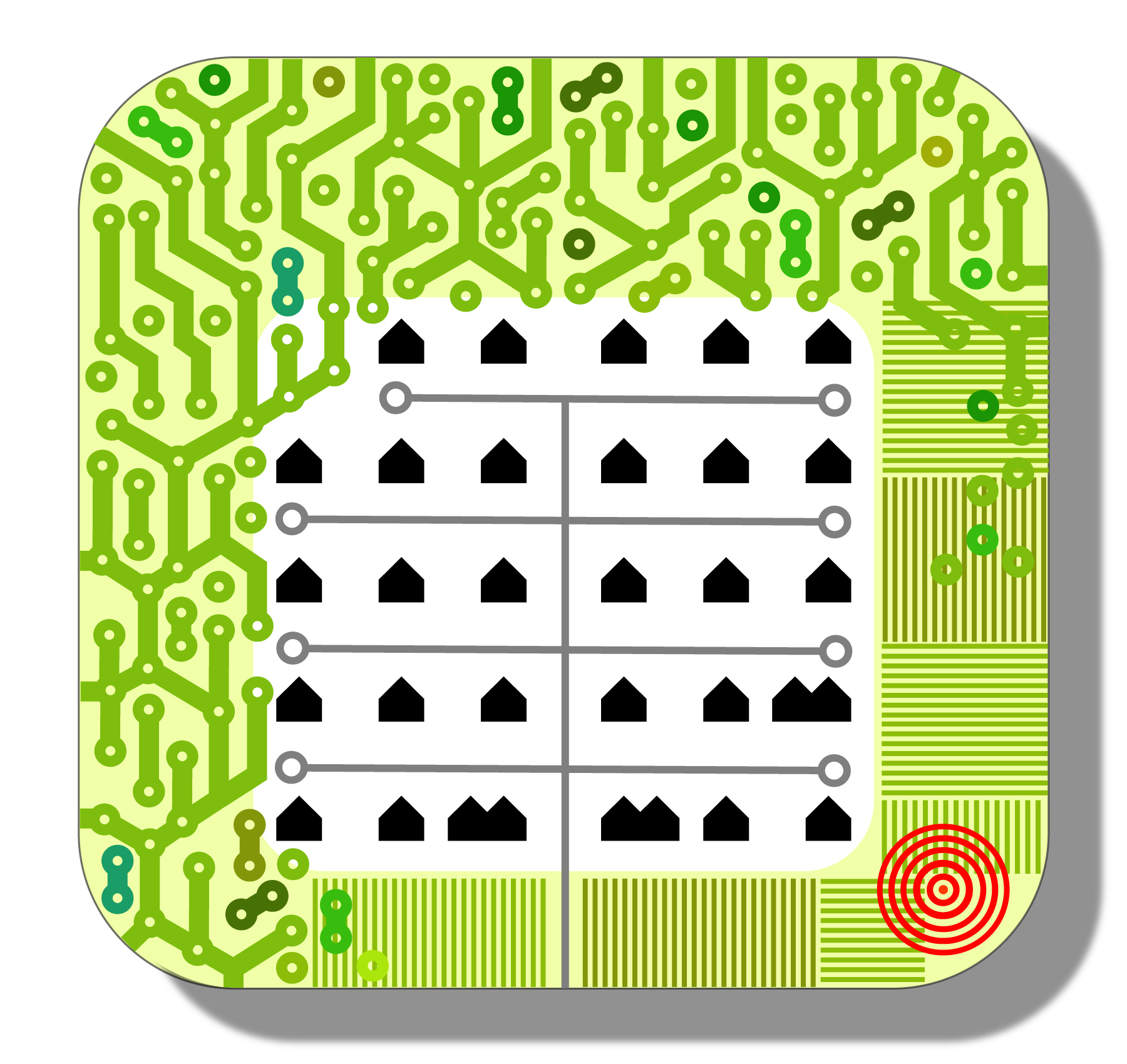
Subtraction
Forest/Jungle, Keller Easterling, 2014. Sequence 2 of 8.
Dana Karwas: Did you re-watch Playtime?
Keller Easterling: It’s just so charming and “alive.” Jacques Tati is attuned to the interactivity between things. Objects in space, some of them non-human and inorganic, are performing something in relation to each other. The bus window, the camera, the people, the tilting glass all have a repertoire of activities that can be in interplay. And he’s just watching it dance.
DK: I love that. It’s like listening to jazz. My young son laughs through the whole movie. Children like repetition. Every time we watch it, he will see something new: A surprise repetition loop. It makes me think of the opening that is being created for the viewer. That window scene struck me as a gateway to something else, an in-between space; what that could be, with the play of the camera. He loves the fake doorknob. We look for it in the restaurant shots: The glass door breaks, and then they keep holding the doorknob up, and opening and closing the door. I think of the body in action, a kind of embodiment of an architectural space that does not exist in mimicry.
I also think of selective attention—what we are paying attention to. Playtime is like the feature film version of the invisible gorilla experiment in psychology. There’s a group of people in a room throwing a basketball between each other, and viewers are asked to count how many times they pass it. Halfway through, a person in a gorilla costume walks by, pounding its chest. The subjects are then asked if they saw the gorilla, and half the time, hardly anyone saw it. When they watch the video again, everyone is shocked. I am very interested in our intuition around visibility. What are these spaces and objects highlighting? What are the connections right in front of us, that we might not necessarily see?
I was struck by your insight of these relative potentials between things that unfold over time. It reminded me of the theater, and the way that we stumble into serendipitous discovery, and how this can be spatially cultivated. And I’m wondering, in terms of connecting spatial culture: Is there a way to cultivate latent space?
KE: When you mentioned that we would be talking about serendipity, it raised many questions. On the one hand, you think of something serendipitous as being related to chance, but maybe that’s not why it’s so startling, or so funny. Maybe serendipity is the thrill of being aware of the potentials within a context, the way in which the arrangement makes some things possible, and some things impossible. There is already a dance between things. A tilting window is at a height that interrupts a range of vision. A finger can thread through the handle of a teacup. The height of a chair corresponds to where a knee bends, and it all fits under a table.
The psychologist James J. Gibson calls these potentials “affordances” that are in an ecology of interplay. So, while something serendipitous is not designed (you used the word cultivated, which is nice), you can put things together in different chemistries that have potentials. You can put Na+ and Cl- next to each other, and you might get salt. A designer is not just designing fixed objects and controlling them with geometry in a rigid aesthetic regime. Designing might just simply be entangling things that have the potential to combine, or nudging things into a richer entanglement.
Most good designers think this way. They are good at mixtures. They’re good at seeing what kinds of things mix, and how they mix; and their potentials for a serendipity that is maybe not so surprising after all.
There is already a dance between things.︎There is already a dance between things.︎
DK: I keep thinking about the body in the play of this as well. I read about your idea of canines, of designers being able to think like a dog, and thinking about our canine ability to identify a situation or a pattern. The theme for this issue took inspiration from this New York Times article about serendipity and the concept of super-encounterers. One of the researchers from the University of Missouri talked about different types of encounters: there’s a kind of non-encounter, where everything is set and they go about their day; the medium encounters, where an occasional thing will happen as a surprise or happy encounter; and then there is this wonderful term, which I loved, called the super-encounterer. He talks about the reporter Gay Talese, who in the 1960s declared that:
“‘New York is a city of things unnoticed’ and delegated himself to
be the one who noticed. Thus, he transformed the Isle of Manhattan into the
Isle of Serendip: he traced the perambulations of feral cats, cataloged
shoeshine purveyors, tracked down statistics related to the bathrooms at Yankee
Stadium and discovered a colony of ants at the top of the Empire State
Building. He published his findings in a little book titled New York: A Serendipiter’s Journey.”
Super-encounterers find the string, and are able to follow it. They are constantly seeking ways to activate the power within them. I think designers have a natural super-encounterer relationship to space, and are looking for and finding these patterns. I was enamored by these weird and enigmatic super-encounterers, and how it relates to design. Even resurrecting the flâneur in this context. The researcher in the article said it helped that the super-encounterers really believed they would find these interlocking connections and surprises, which helps close the cycle.
KE: That’s wonderful. I do remember something about that in The New York Times. The potential for connection is there, and that it is a matter of detecting it—a matter of reading the spatial language of a heavy information system.
DK: Yes. I keep coming back to that. I’m always thinking about: How does this play into the body, in relationship to its environment? What are all the possible layers and aspects of understanding of our own body in space?
There are scientific, neurological observation processes where labs are looking at what neurons do when people walk from point A to point B. And there is a significant history of metrics that can be put around the physical. But, there is also all of this unmeasurable stuff. What do we call this unmeasurable stuff? How does it relate to the body?
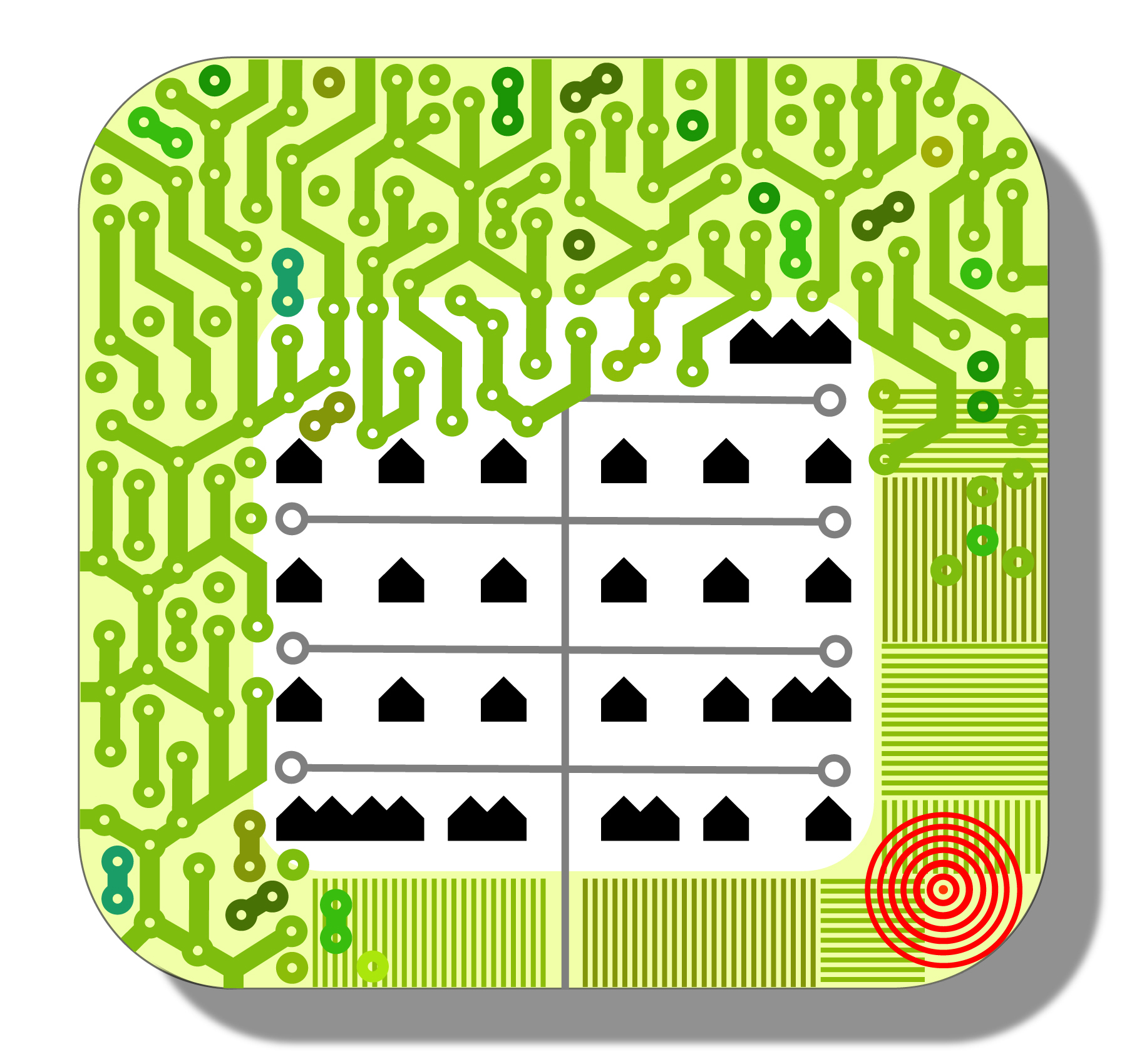
Subtraction
Forest/Jungle, Keller Easterling, 2014. Sequence 3 of 8.
In my class, “The Mechanical Artifact,” we put a student on a parabolic Zero-G research flight, where the body is put in zero gravity for 15 seconds at a time. It is somewhat extreme. It allows someone to be in an environment where their body is put under very different circumstances. Even though they are in a plane, they are floating. The class looks at how to design an architectural space or environment that would relate to the body in this kind of free-form fall, as a way to reorient our awareness.
If we don’t know what this new environment’s going to be in the future—for example, if we all end up in off-planet life—what will those relationships between the body and the space look like? If we go completely outside of our environment and look at that, and then come back down to this planet, is there something that we can extract from that? This would be some type of affordance, or a way of further understanding something we don’t even have language for yet. The body as an interpolation to the spaces, and the impact that they have.
This builds from my conversation with Sarah Oppenheimer for Maquette. We based our interview on something called the isovist, which is a new favorite term of mine. It is anything that can be perceived from the position you’re standing in. My isovist right now is: I’m looking forward, and I can see all the way out my window—all the way to a tree that’s probably 500 feet away. But that’s only within a certain frame. And then it’s cut off by a dresser and a bed in the house. I could imagine what your isovist is right now. I don’t know what’s in front of you or behind you, but it creates these beautiful spatial dimensions.
When I was reading about your concepts related to spatial potentials, I was also thinking: How do we measure those? How do we map them? Are they even mappable?
KE: I have seen isovist mappings, but I didn’t know there was a word for this. I’m thinking back to the flâneur, and about the untapped potentials of the human body. We generally are not thinking about things like the stretches and ranges of space that our eyes can see, or what our internal organs are like. I say this as a performer who first trained in theater before architecture. The potential of what the body can do and know is so stunted by conditioning. Medium Design begins with a straw man critique of modern Enlightenment habits of mind—the love of abstraction, ideational monotheism, the one and only and the Manichean struggle. The capacities of the human body are underexploited and under rehearsed. They are pounded into you when you’re a little kid, to know the right answer to things and be able to name things. It’s a nominative habit of mind, instead of an active infinitive habit of mind.
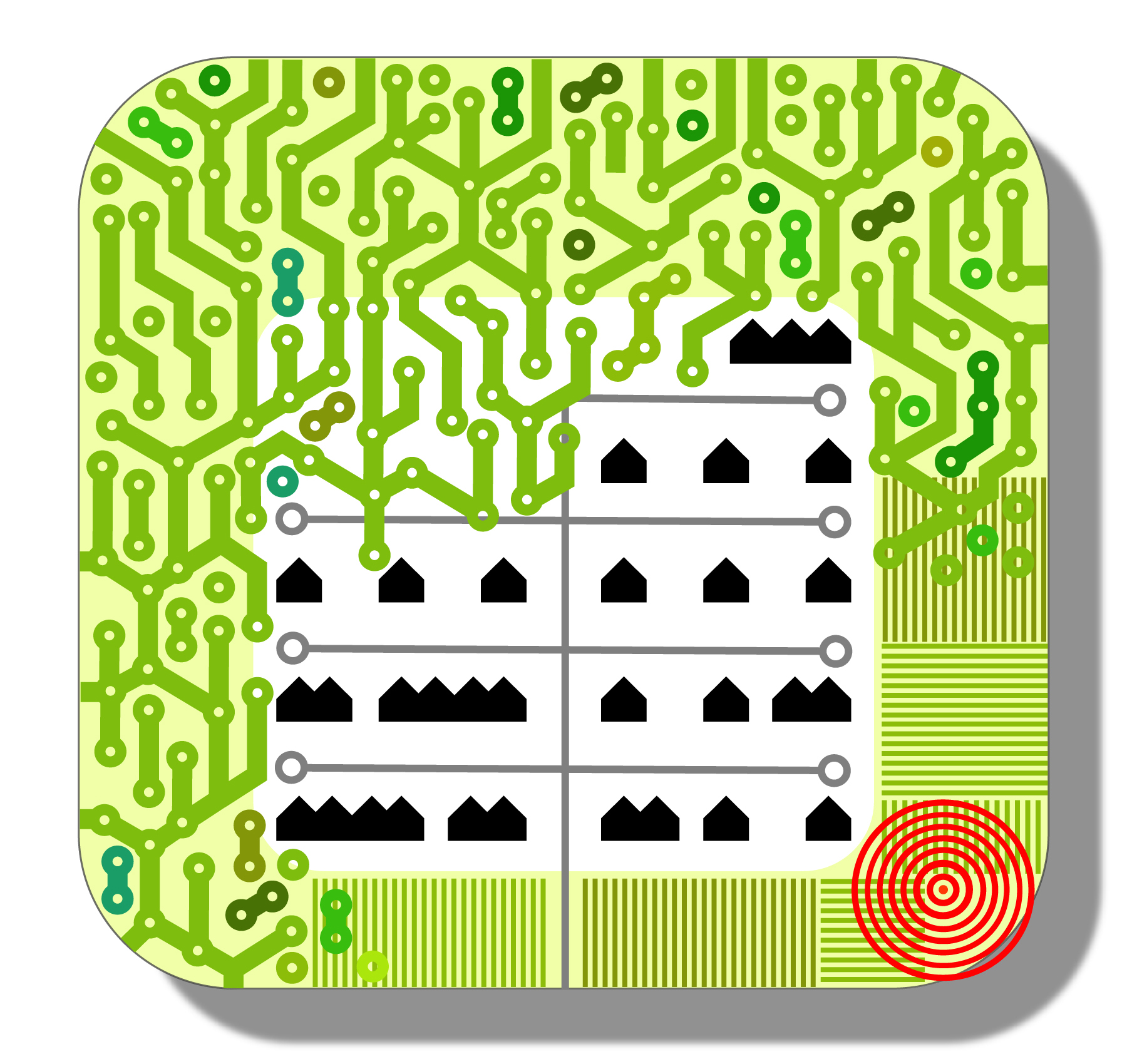
Subtraction
Forest/Jungle, Keller Easterling, 2014. Sequence 4 of 8.
I hadn’t really thought about the flâneur in such a long time. The flâneur is performing art in another active register within which optics are only a part. They are detecting active potentials or dispositions in a context.
DK: Like a detective. I hadn’t thought about the flâneur either until I read the serendipity articles. I thought, Wait a minute, how would this fit in? I started looking at images. I was showing my students the classic flâneur image of the 19th century gentleman walking the turtle through the streets of Paris:

Image by Sarah Feng, 2022.
There’s so much more we need to know. The flâneur makes me think of disassociation, or almost removal. Removing oneself from the performance, and entering another performance, but sharing the same space. This ties into your idea of successive technology, the obsessive belief of replacing the old with the new, only to find that it is the exact same thing—a force, a pressure of measuring success within the endless updating of technology. A recycling of it. Is there a flâneur 2.0, in tech terms?

Image by Chloe Hou, 2022.
KE: As you talk about that, I think of, among many things, the novelist, dramatist, and cultural theorist Sylvia Wynter in an interview titled “The Re-enchantment of Humanism.” She thinks around and beyond the last five hundred years of Enlightenment mono-ideational thinking and monocultures. What might be the capacities of a re-enchanted human?
Enriched thinking is not only an advance. It is not only a modern move prompted by a new technology. It may even be the shedding of that modern habit and a sense of how to make more complex mixtures with existing, underexplored capacities of humans. In the fiction I write, there is a reference to “loud-brained humans”—aggressive, nominative beings who are only aware of their bodies if they are in extreme conditions.
DK: Yes, because it’s not new. The feedback is so desensitized, or sanitized. They’re looking for the extreme or the new. I’m trying to think of what the inversion would be, in the primitive or primal. The word ‘re-enchantment’ makes me wonder if there is some type of transcendence, or sound, like Tibetan sonic bowls. People are looking for that, but I think they’re looking in the wrong places. It also reminds me of the quest of exertion of the mountain hiker, or the tech executives who need to go climb Everest. This conquering of the space—it’s becoming a human need.
I’m curious to know more about your fiction.
KE: Well, you might not call them short stories. They are an experiment with mixing different narrative forms from different series. There are several series. One explores more-than-human powers—“Crooked,” “Atomized,” “Still,” “Tight,” “Thin,” “Loose,” “Layered.” They describe incredible powers that are accessible, but just under-developed. Then there are other series: fictional essays, cocktails, non-stories or stories without event, direct addresses, parallel voices, stories from another time, and dialogues. Hopefully mixing and interplay between the series generates something beyond their content. The texts are independent but integrated, and they share correspondences, repetitions, and hidden pictures.
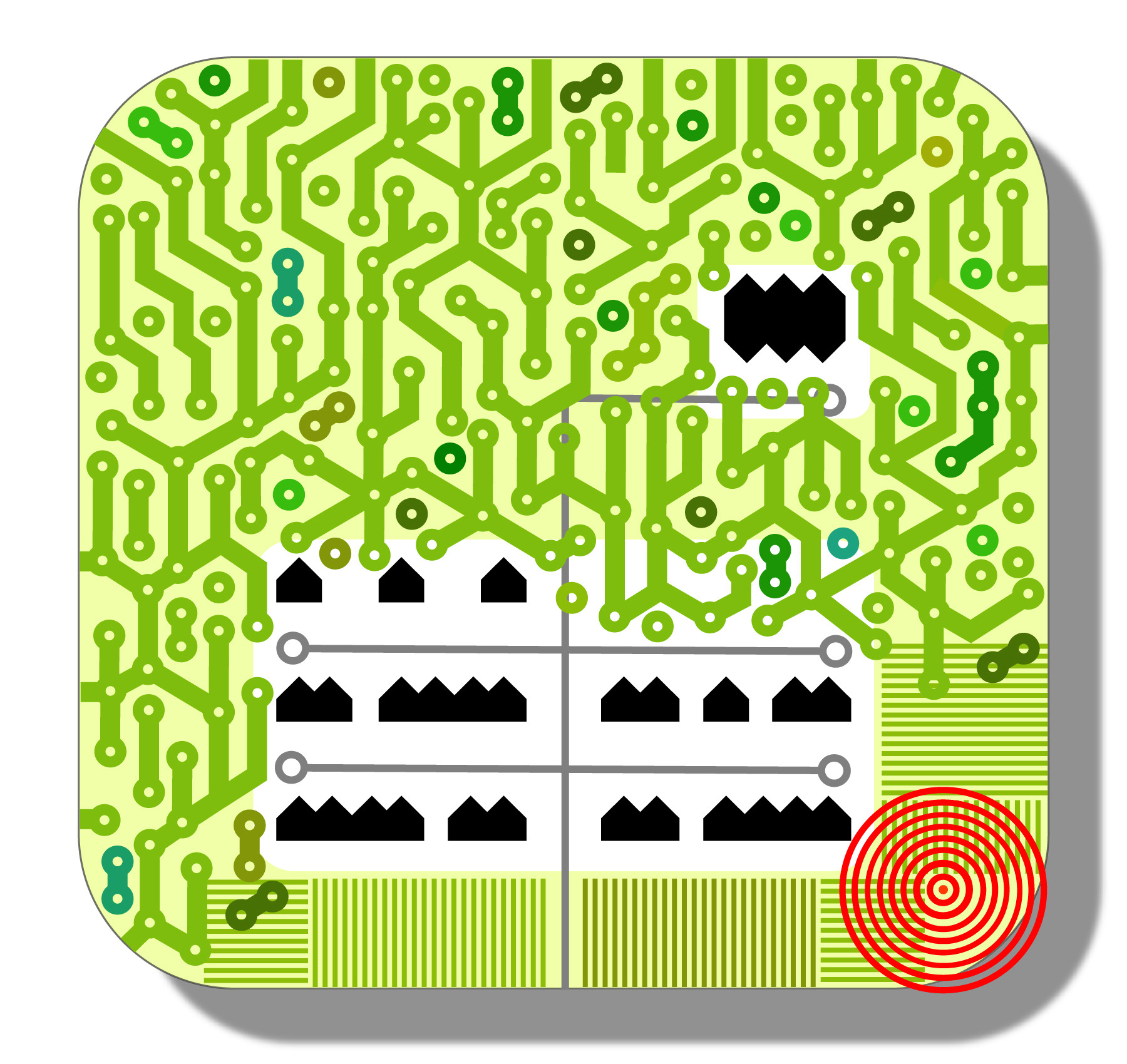
Subtraction
Forest/Jungle, Keller Easterling, 2014. Sequence 5 of 8.
DK: I would be an eager reader, if those ever get released into the world. When you mentioned serialization, it reminded me of a term you used in Medium Design: “the unexpected bounce of aesthetic signals in culture.” You were referring to the explorations of the French philosopher Jacques Rancière. What is that, in your mind? What is that feeling?
︎The texts are independent
but integrated, and they share correspondences, repetitions, and hidden
pictures.
KE: Rancière makes a distinction between the aesthetics of the connoisseur who taxonomizes in art historical categories and the aesthetic practices that generate or enact a politics. He writes about the politics of aesthetics, or the way in which aesthetic signals bounce in culture. They might even be decoupled from their presumed or stated message. He gives the example of Madame Bovary, or A Sentimental Education. In both, a relatively conservative Gustave Flaubert wasn’t expressing liberatory thoughts, and yet, the book was received in that way. It inspired liberatory activities. I always give the example in class of Bob Dylan’s “Like a Rolling Stone.” You know, the lyrics are about Edie Sedgwick, a bratty rich girl. But it’s the sound of his voice, screaming, How does it fee-el? that ends up being theme music to a counterculture summer. You can’t know how things will land, but you can be aware of how they are landing and in a certain context.
This may link to the discussion of serendipity. I am not sure. Or is it a similar collision? There are thinkers like literary theorist Caroline Levine—who would land somewhere between structuralism and post-structuralism. They’re noting the affordances of forms. But they are still focused on the political potentials in their unpredictable collisions. There are unpredictable collisions about which you can still detect component chemistries.
DK: It’s an awareness of not losing control of the collisions. I don’t know why I thought of this, but when you mentioned post-structuralist and structuralist, I thought of where I grew up, in the suburbs of St. Louis. I thought it was the best place in the world until I went to architecture school. During my second year at the University of Kansas, I attended a film architecture class, and we were reading theorists like Gilles Deleuze and Sanford Kwinter. We watched the movie Koyaanisqatsi by Godfrey Reggio. When I went back home, I thought: Wait a minute, something is wrong with this place! And I gave my parents, who are not designers, a whole manifesto about why the suburbs are wrong, and why our house didn’t make sense. I completely lost it, with the ammunition from what I’d been reading. I was fired up! I suddenly saw something in a new light that I had been living inside of for a long time. That was complicated—and also funny.
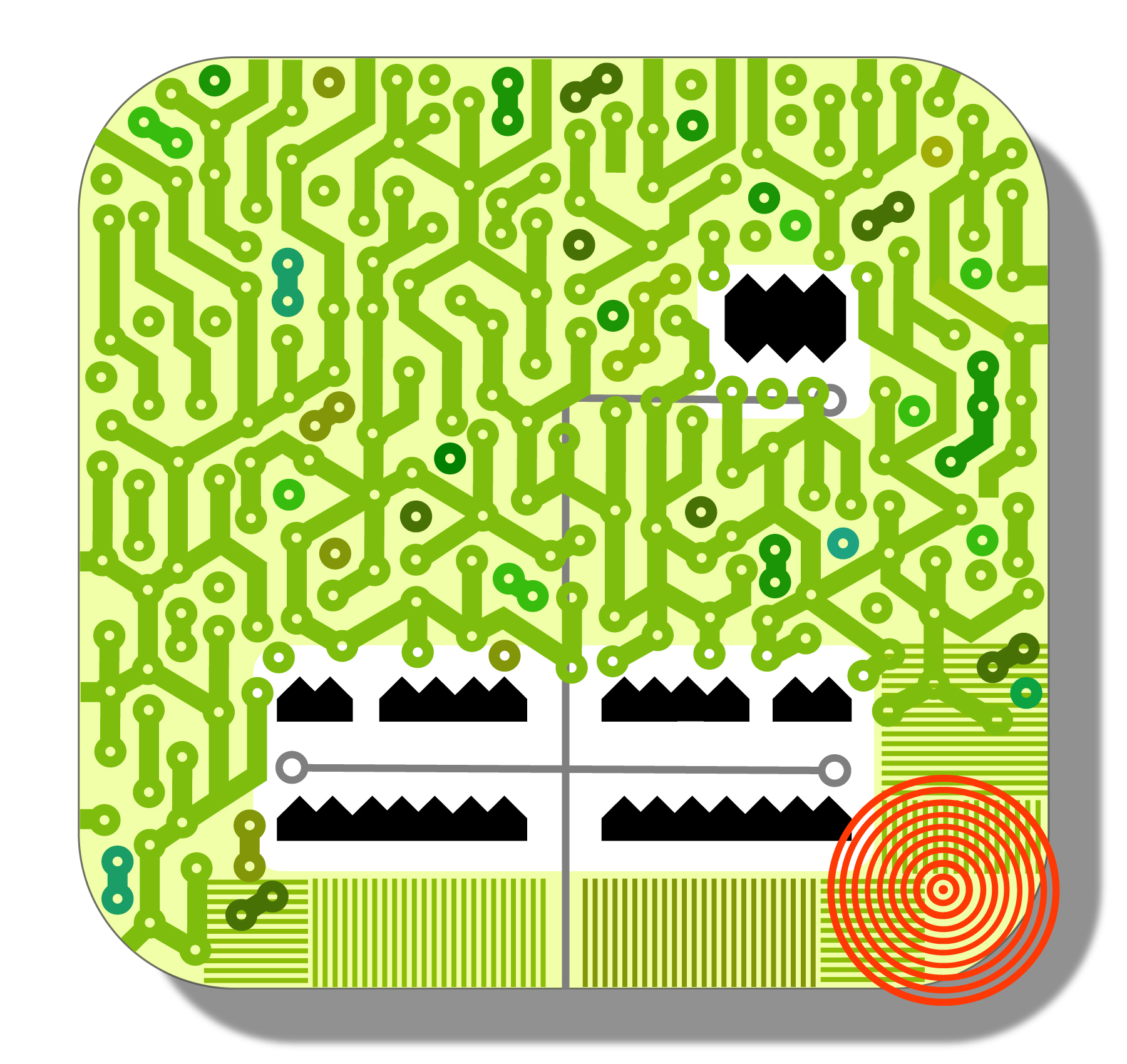
Subtraction
Forest/Jungle, Keller Easterling, 2014. Sequence 6 of 8.
It led me to doing research on Thomas Kinkade, the self-styled “Painter of Light,” who made all those Christmas tree trinkets that light up underneath. He made these kitschy, mass-produced pastoral paintings of countryside cottages. He’s the most profitable American artist who is not recognized by the art world. He monetized his art, and opened little galleries inside shopping malls all across America. Some of the paintings have more value: If he painted it, for example, or if one of his team touched it up. This escalated into an empire. It sold a dream of another kind of landscape. There’s this suburban development in California—Taylor Woodrow built a subdivision called Hiddenbrooke based off of these paintings, that has about a hundred homes. Each one comes with the Kincaid paintings inside, and the most prominent one over the fireplace.
Reading all this, it all felt like a closed loop: this suburban art that turned into the suburb itself. It left me thinking that there is no room for an interplay of interactions. My response was to think up a project: A contract that new suburban homebuyers would sign, that would contain an unpredictability clause. A wolf or monster could be sent to the property at any given moment to terrorize your family for a day to provide some excitement! This type of clause could be built into the longevity of the home—what if that were the latent space of home?
KE: A Black Mirror scenario that is again, startling—not because it is sci-fi, but because it is and has always been. Maybe your story only makes palpable the ways in which people have to sign up to be the victims of racial discrimination and predatory lending. They sometimes have no choice but to sign up to be literally preyed upon. Medium Design is trying to train an ability to detect not only the felicitous collisions, but also the violent ones—the latent, unspoken potentials to erase, poison, and torment with imbalanced power dynamics, environmental pollution, data monopolies, and murderous policing. In your brilliant and dark scenario, it is as if even these factors have been monetized like points on your mortgage.
DK: Yes! Risk points, but completely inverted into some horror movie!
KE: I too, grew up in the suburbs. You go outside blinking in the naked sun, and there’s a tiny little house, set 60 feet away from a 60-foot-wide street, then another 60 feet of yellow front yard, and another tiny little house. It was all specially designed so that if a giant truck was going really fast and jumped off the road, it wouldn’t hit your house. All these traffic-engineered dimensions and turning radii, and nothing gets near enough to interact. It is terrifying.
DK: And the reveal of that, whether inhabitants know it or not. They don’t see it. I’ve always been fascinated by those in-between pockets that can be found in the suburbs. The only place I can think of where an encounter could occur is the parking lot of the big box grocery store. When people leave their car and walk into the store, there’s almost a free zone, or cease-fire of control, leading to unpredictability. They might bump into someone familiar, which doesn’t happen that frequently. I’ve always wanted to create more from the in-between space. Pushing for more interaction, trying to find a pocket inside of the system, at the gateway to the local Wegmans. Which has delicious pizza, by the way.
In Medium Design, you also mention “the switch,” which was such a treat to read about. Transportation switching, and the reorganizing of how we’re moving across space and time. Recently while in New York, I had this incredible switching moment. I was late for my train up to New Haven. I was on my way to the new Moynihan Train Hall at Penn Station. I got tangled in the spatial dynamics of the Hudson Yards, where there was this series of urban levels, and I kept having to level switch. I was running, walking, scooting, stepping, shifting. For the final minute, I scooted all the way through to the new station through a series of ramps, hopped off, folded up the scooter, and made the train. Foot to scooter, scooter to train, go! I was in a taxi at one point. It all happened so quickly and easily. It was enlightening, though a little stressful, the way it compressed time. I wasn’t quite happy with the experience, but it excited me to think about the way you’re writing about it.
KE: You were doing parkour through the transportation systems! The first time I ever wrote about switching was in Organization Space: Landscapes, Highways, and Houses in America. Then I did a project based on this idea that was actually applied to that area of the city and exhibited at the Queens Museum. They became ossified by real estate, but it had all the potential. As the social scientist and cybernetician Gregory Bateson said: “A switch is a thing that is not.” It is not a thing. It is a delta or the registration of a change. Just as serendipity is not something you can plan, but you can set up the potential for something to happen.
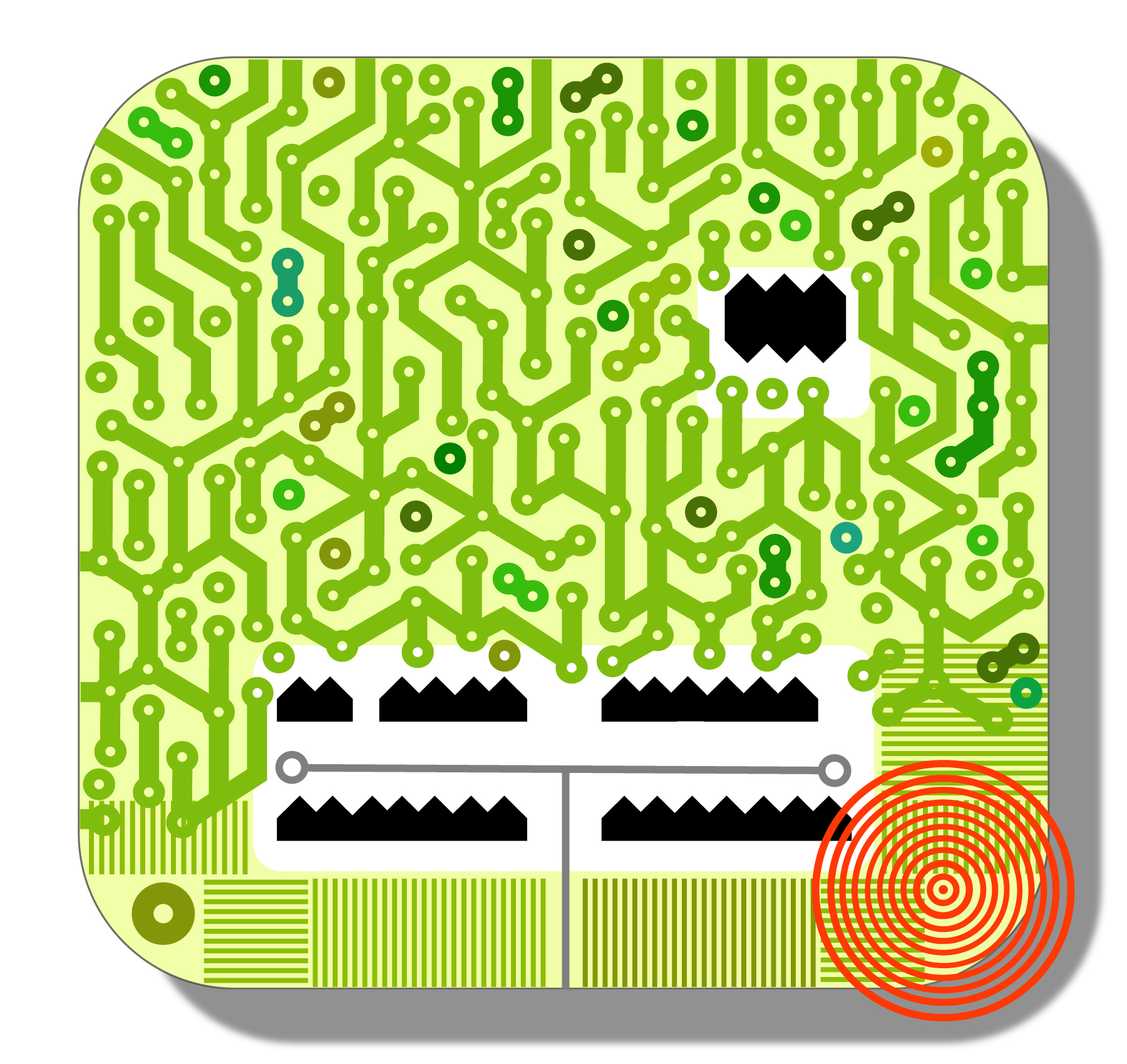
Subtraction Forest/Jungle, Keller Easterling, 2014. Sequence 7 of 8.
We have managed to segregate most transportation infrastructure. A highway interchange is not a place of changing, but a place of staying the same. The morphology is all about keeping the same speed to make a turn. In transposing intelligence from digital networks to physical networks, many of the things that could have introduced switching and therefore more redundancy, were removed. More chances to make connections were removed. Attempts to get rid of old technology and replace it with the new just make the whole assembly even dumber.
As a researcher, I think we have to get better at not only measuring the outcome of events, but also measuring the potentials for change in various scenarios. It is a crucial kind of creative modeling that is more than either data visualization or quantitative proof.
This business of medium design is a little bit like playing pool. You can’t know the answer to playing pool, but you can know something about what to do next. There is no right answer to managing transportation networks, but approaches that mix transportation of different capacities—high capacity transit with fleets of cars, bikes and pedestrians—offer one of those moments to take a shot.
︎Serendipity is not something you can plan, but you can set up the potential for something to happen.
DK: Up against all the data, quantifiable results, or metric—how does one get everybody to believe in that switch? How do master planners propose it? They’re rolling out an X amount of the undefined, within a plan. It’s the quantification obsession. At CCAM, there was an artist who was working with a group of scientists. They ended up not getting along, because a scientist wanted the artist to clearly show that they were using a quantum mechanics equation. The scientists wanted it to be specific, so that people could look at the art, and understand the equation. And the artist was like, You can’t. That’s not what this is about. I’m not trying to disagree. It got a little tense. It makes me think of this obsession of the “correct” and the “right” and how that relates to the sciences. It is complex, because there’s no metric for art, and I don’t know if there needs to be.
KE: Yes. There are many relationships and potentials to model, some of which can be quantified. But creative modeling of protocols that build more information-rich mixtures—in transportation or any other sector is essential and should have more authority in decision making. Innovation is not only the new technology, but the conception of protocols for the way things go together. Otherwise, we’re just more precisely measuring our doom.

Subtraction Forest/Jungle, Keller Easterling, 2014. Sequence 8 of 8.
For more information on Keller Easterling, visit her site.
Dana Karwas is an artist whose sculptures and research investigate new, human reference frames for dimensional information. Dana is Director of the Center for Collaborative Arts and Media (CCAM) at Yale and is a Critic at the Yale School of Architecture teaching courses related to mechanized perception, space architecture, and inverting our relationship to the cultural forms of our time. She holds an MPS from Interactive Telecommunications Program at NYU’s Tisch School of the Arts and has a Bachelor of Architecture from the University of Kansas. Her upcoming short film about the future of the anthroprocosmos, Terra Cosma, will premiere in New Haven, Connecticut in February 2023.